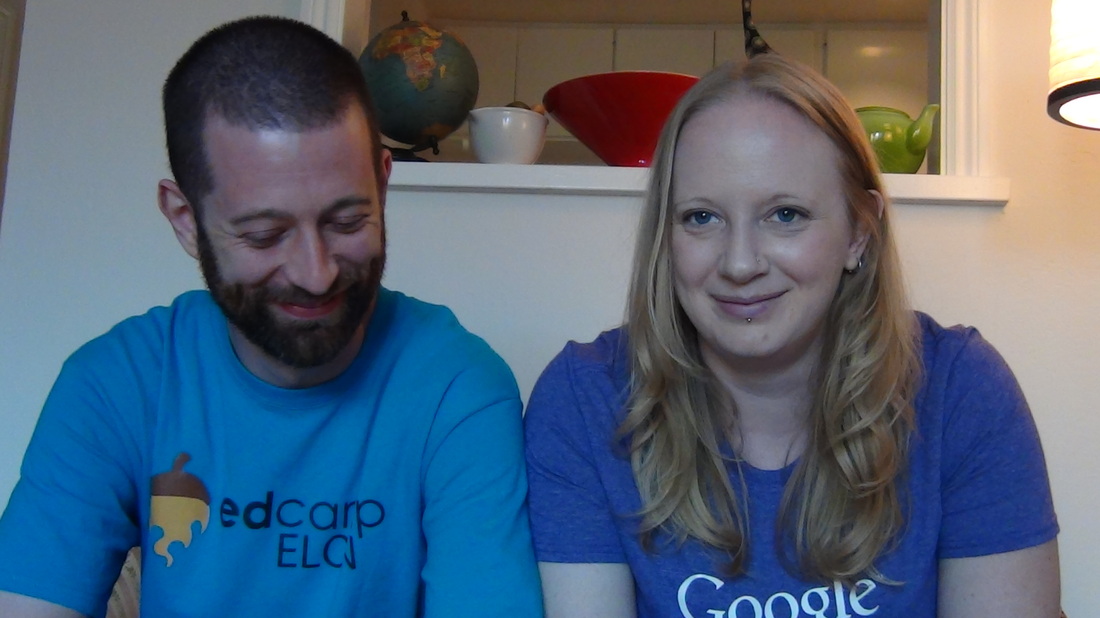One of those people is Andrew Thomasson (@thomasson_engl). He and I met through Twitter, while following #flipcon12 and #flipclass. There are so few of us English flippers that we get really, REALLY excited to find another person crazy enough to plow head-long into the unknown. After dozens of messages back and forth, we decided to just have a real conversation over FaceTime.
It started with the idea of creating some skill-based videos together. We're both flipping primarily 11th-12th grade, with high achieving students. And then we came onto the idea that changed everything: working together, we could create a series of videos that follow the writing process from idea to publishing, and shows a complete essay as it's being created. We'll work with a teacher/student dynamic, and flip roles periodically.
He came up with this filter to spiral out our skills (because you obviously can't cover everything in one video):
--What should a serious essay include?
--What should a competent essay include?
--What should an awesome essay include?
For the first video, we'll cover the research process/essay. More info to come (when we figure it all out).
*******
This is only one of the projects that I'm going to collaborating on with other teachers over the summer. I don't know why I never thought to expand my classroom walls previous to this. Okay, that's not true. I do know why. But it's not relevant to the classroom.
Another part of my summer collaboration is to interact with the Edmodo group for English Language Arts teachers who are flipping or planning to flip. There are now over 80 people in the group! It's amazing how much the idea of flipping has spread. I'm excited by the opportunity to work with such talented, visionary people who work so hard to make the classroom the best possible environment for learning. It's an exciting time to be a teacher!
If you're interested, below the fold is the document I put together using the Common Core Standards connected to each part of the writing process. I hid it beneath the fold so that you don't have to scroll forever to get to the end of it.
Writing Process attached to Common Core Standards
11th-12th grade standards
Getting Ready to Write
Includes brainstorming, prompt analysis and research
--determine what development, organisation and style are appropriate to task/purpose/audience W4
**Research**
--write informative texts that examine and convey complex ideas/concepts/info W2
--use info clearly and accurately through effective selection/organisation/analysis of content W2
--conduct short/sustained research projects to answer a question or solve a problem W7
--synthesise multiple sources on a subject and demonstrate understanding W7
--demonstrate understanding of the subject under investigation W7
--gather relevant information from multiple sources W8
--use advanced searches effectively W8
--assess strength/limitations of each source in terms of task/purpose/audience W8
Preparing to Use the Text
--cite strong textual evidence RL1
--make inferences drawn from text RL1
--determine theme of a text RL2
--analyse theme and its development RL2
--analyse impact of the author's choices RL3
--analyse impact of specific word choices on meaning/tone RL4
--analyse impact of author's choice of structure RL5
Outlining/Planning
--choose relevant/sufficient evidence W1
--create a precise, knowledgable claim W1a
--create a logical organization W1a
--develop and strengthen writing by planning W5
--draw evidence from text to support analysis, reflection and research W9
Drafting - body
--develop claims fairly and thoroughly with best evidence and anticipates concerns W1b
--organise complex ideas so that each element builds on previous one to build unified whole W2a
--develop topic thoroughly by selecting most significant/relevant facts/etc. W2b
--use appropriate/varied transitions and syntax W2c
--integrate information into the text selectively to maintain flow of ideas W8
Drafting - intro/conclusion
--provide objective summary of text RL2
--provide concluding statement that follows from/supports argument W1e
--introduce a topic W2a
Editing for grammar/mechanics
--use words/varied syntax to create cohesion and clarify relationship b/t claim/reason/evidence W1c
--develop and strengthen writing by editing W5
--avoid plagiarism and follow standard citation format W8
--demonstrate command of the conventions of standard English grammar/usage L1
Revising
--establish and maintain a formal style and objective tone W1d
--develop and strengthen writing by revising W5
Final Draft
-produce clear/coherent writing w/development/organisation/style appropriate to task/purpose/audience W4
--develop and strengthen writing over each draft W5
--use technology to produce, publish, and update individual/shared writing W6
--avoid over reliance on any one source W8
--write routinely over various time frames, tasks, purposes and audiences W10
--demonstrate command of standard conventions when writing L2


 RSS Feed
RSS Feed
